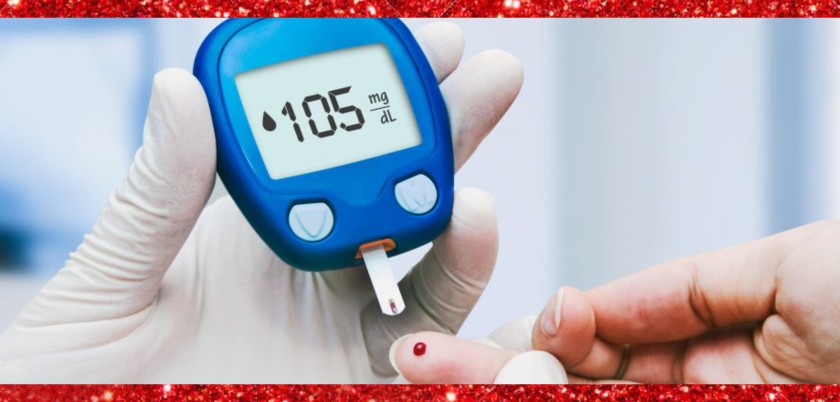
A TO Z OF DIABETES
Diabetes mellitus or madhumeham has been known for centuries as a disease related to sweetness. Diabetes is termed as a ‘metabolic disorder’ as it’s an error in the body’s metabolism of carbohydrates hat causes increase of glucose/ sugar in the urine and/or blood.
Diabetes: A silent killer
Indian population is also known as the diabetic capital of the world because it's a home for highest number of diabetics in the world. Ninety percent of the population suffers from type 2 diabetes. It is generally believed that diabetes is more prevalent in affluent societies of urban areas where obesity is a major health problem.
Let’s understand what goes wrong in the body
Our body continuously needs energy to perform different activities and we eat food to get this energy. Carbohydrates and fats are the main nutrients that provide energy to the body. When we consume a diet containing carbohydrates, our body’s digestive system digests the carbs to a simple sugar called glucose. From the intestine, where the glucose is formed post-digestion, glucose is absorbed by the blood stream. This raises the blood glucose level. But the efficiency of our body machine doesn’t let this rise in blood sugar persist for a longer time. The pancreas in our body contains beta cells which produce a hormone called insulin, body’s natural response to rise in blood sugar. This hormone acts as a key that unlocks the cells so that glucose enters the cells from the bloodstream and cells utilise this glucose to synthesize ATP that is energy.
So, if any of the above steps is defected, risk of having diabetes increases-may it be insufficient production of insulin by pancreas or insulin resistance in the body, whereby insulin is produced but our body cannot utilise it efficiently. Sometimes, accident or injury to pancreas also damage the pancreas to secrete insufficient insulin, making them at higher risk of getting diabetes.
Type of diabetes
Diabetes is mainly of two types:
Type 1 Diabetes
It is also called insulin-dependent diabetes. This type of diabetes generally affects children and adolescents. It is a type of autoimmune disease. Generally, body’s immune system protects the body from infections and foreign invasions. But in diabetes, the body’s immune system considers the beta cells of the pancreas as foreign bodies and starts attacking them. As a result, either there is no or very little insulin production. Such persons need a continuous insulin injection as their body’s cannot produce it anymore. Moreover, since it is autoimmune, there is no prevention when it comes to type 1.
Type 2 Diabetes
It is the most common form of diabetes, also called as non-insulin dependent diabetes. As the person ages, the deposition of abdominal fat leads to a condition called insulin resistance. In this condition, there may or may not be a deficiency in insulin production, but the utilisation of insulin decreases, that is body becomes insulin resistant.
Physical activity, appropriate diet and consuming oral drugs can very well manage this type.
Risk factors
Hereditary
Particularly type 2 diabetes is believed to run in families.
Sedentary lifestyle
Lack of physical exercise promotes type 2 diabetes.
Unhealthy eating practices
Eating too much of fatty foods, simple sugars, refined food and not enough fibre raises the risk.
Ageing
As a person ages, risk of type 2 diabetes also increases.
Obesity
Obesity especially abdominal obesity raises the risk as it leads to insulin resistance in the body.
Stress
It not only increases blood glucose in diabetics, but also precipitate diabetes in subjects predisposed to it.
Symptoms
Many diabetics may not be aware that they have the disease. But the common symptoms include:
- Three P’s - Polyphagia (increased appetite), Polyuria (increased urination) and Polydipsia (excessive thirst)
- Slow healing of cuts or wounds
- Easy tiredness
- Recurrence of infections
- Loss of weight
Diabetes and associated complications
Acute complications
A diabetic is likely to develop acute complications as a result of sudden and severe increase or decrease in blood glucose levels.
- Hypoglycemia
The rapid and severe lowering of blood glucose followed by increased appetite, weakness, sweating, restlessness, palpitation etc. is called hypoglycemia. Recurrent hypoglycemia may be deadly.
- Diabetic ketoacidosis
When the body cannot utilise carbohydrates, it burns fats to get energy. This results in increase in the levels of by products of fat metabolism i.e. ketone bodies. This is called ketoacidosis. It is a life threatening condition.
- Infections
In diabetics, cuts and wounds heal slowly. They are prone to infections of skin, urinary tract and foot.
Long term complications
These are of two types:
Macrovascular disease
This is due to injury to large blood vessels, making them more prone to developing atherosclerosis or heart disease.
Microvascular disease
These affect the small blood vessels of the body. These are of three types-
- Retinopathy (eye damage),
- Neuropathy (lesions on peripheral nerves) and Nephropathy (damage to kidneys).
Target goals of diabetes control
- HbA1C- less than 7%
- Fasting blood glucose- 90-130 mg/dL
- Random blood glucose- less than 180 mg/dL
Diabetes management
No need to worry if you have Diabetes because this metabolic disorder can be controlled fortunately with lifestyle changes - adequate diet, regular exercise and intake of prescribed drugs or insulin injections.
The final word
Diabetics can lead a normal life, provided they take prescribed drugs and make certain changes in their lifestyle, particularly in their diet and physical activity.






